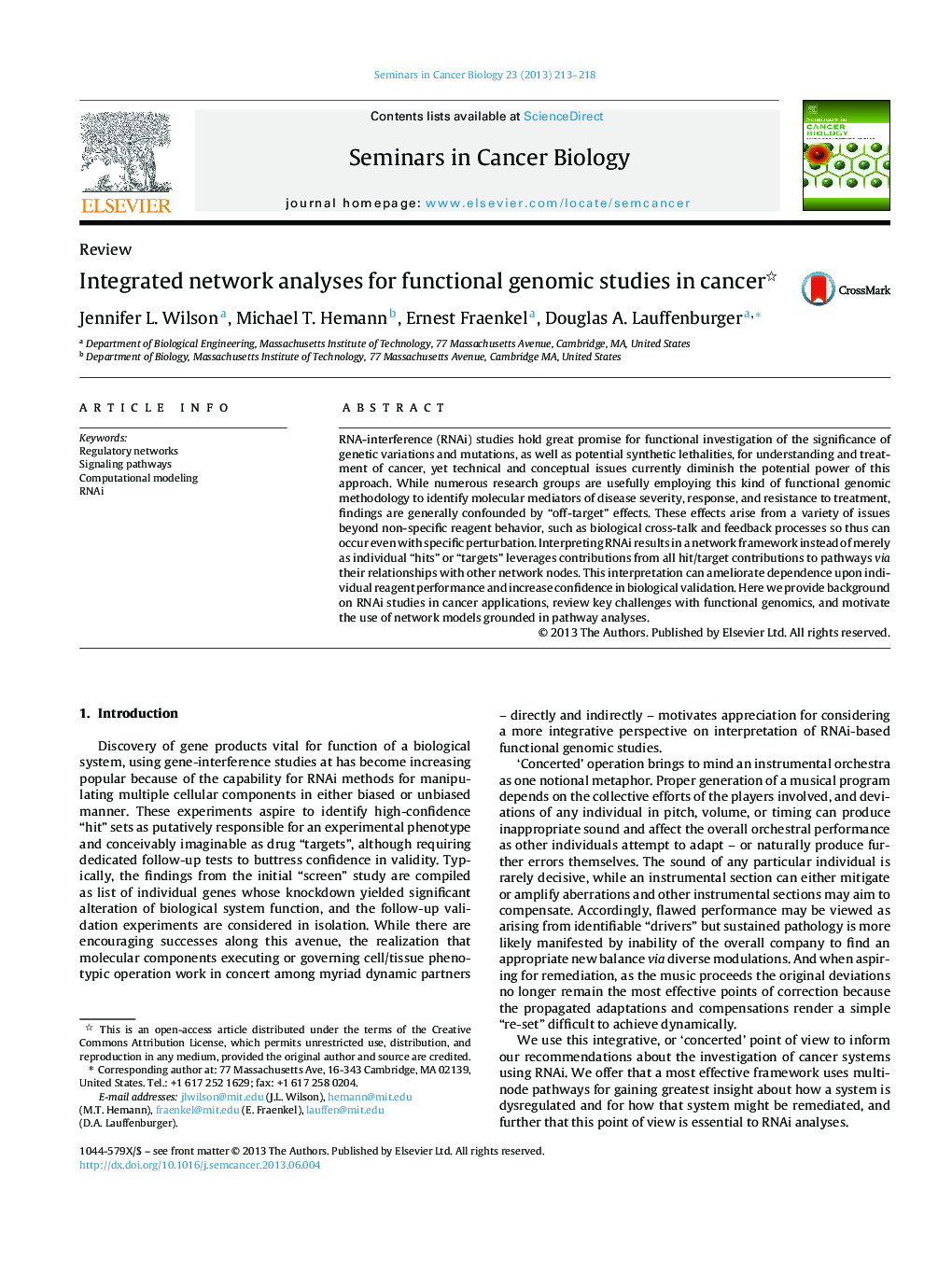| Article ID | Journal | Published Year | Pages | File Type |
|---|---|---|---|---|
| 10845618 | Seminars in Cancer Biology | 2013 | 6 Pages |
Abstract
RNA-interference (RNAi) studies hold great promise for functional investigation of the significance of genetic variations and mutations, as well as potential synthetic lethalities, for understanding and treatment of cancer, yet technical and conceptual issues currently diminish the potential power of this approach. While numerous research groups are usefully employing this kind of functional genomic methodology to identify molecular mediators of disease severity, response, and resistance to treatment, findings are generally confounded by “off-target” effects. These effects arise from a variety of issues beyond non-specific reagent behavior, such as biological cross-talk and feedback processes so thus can occur even with specific perturbation. Interpreting RNAi results in a network framework instead of merely as individual “hits” or “targets” leverages contributions from all hit/target contributions to pathways via their relationships with other network nodes. This interpretation can ameliorate dependence upon individual reagent performance and increase confidence in biological validation. Here we provide background on RNAi studies in cancer applications, review key challenges with functional genomics, and motivate the use of network models grounded in pathway analyses.
Related Topics
Life Sciences
Biochemistry, Genetics and Molecular Biology
Biochemistry
Authors
Jennifer L. Wilson, Michael T. Hemann, Ernest Fraenkel, Douglas A. Lauffenburger,
